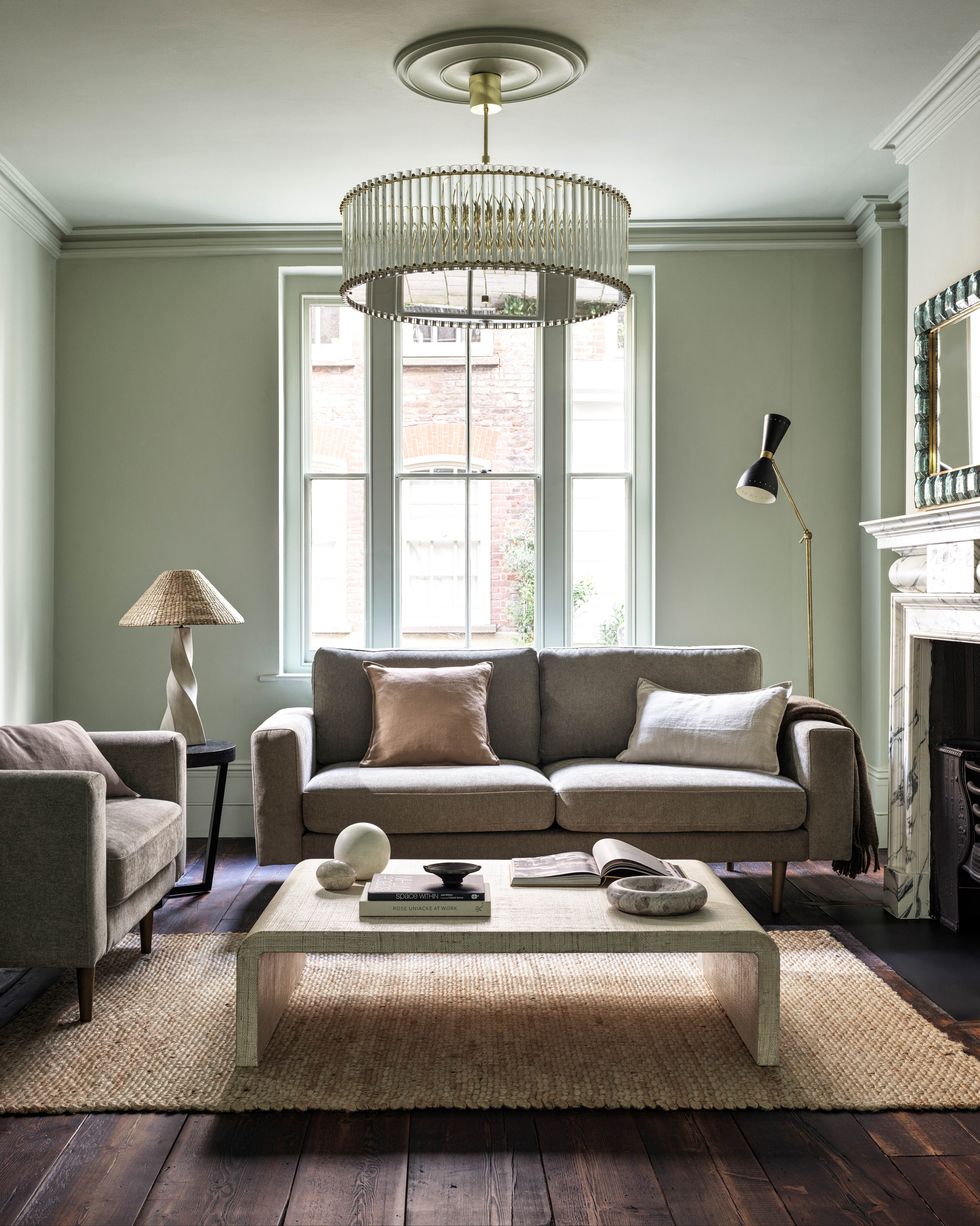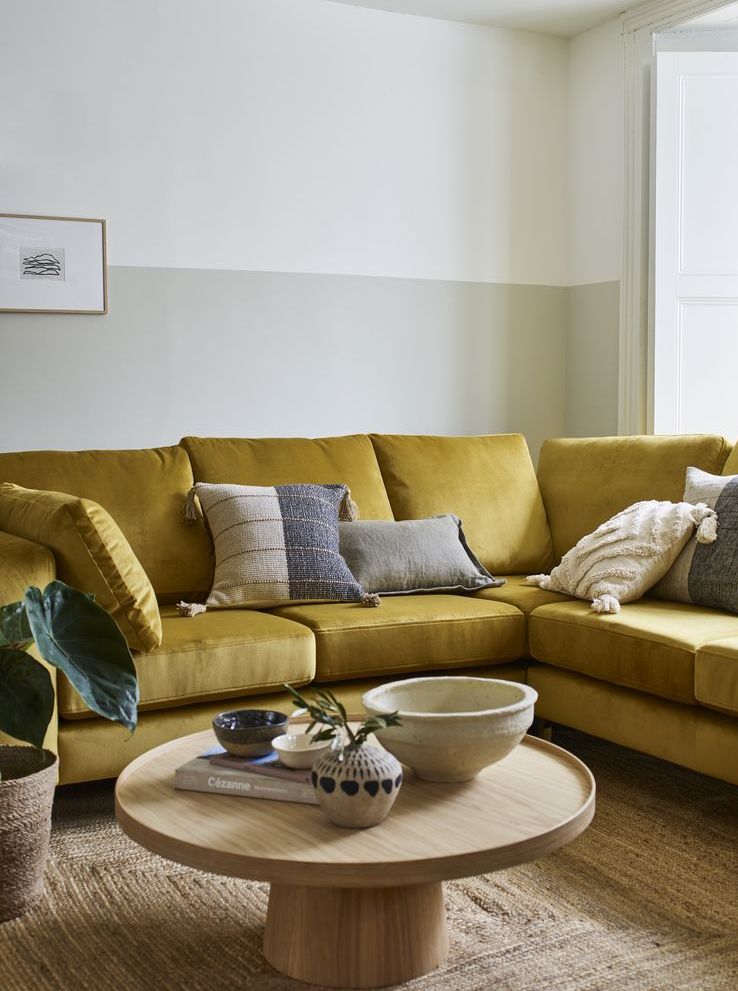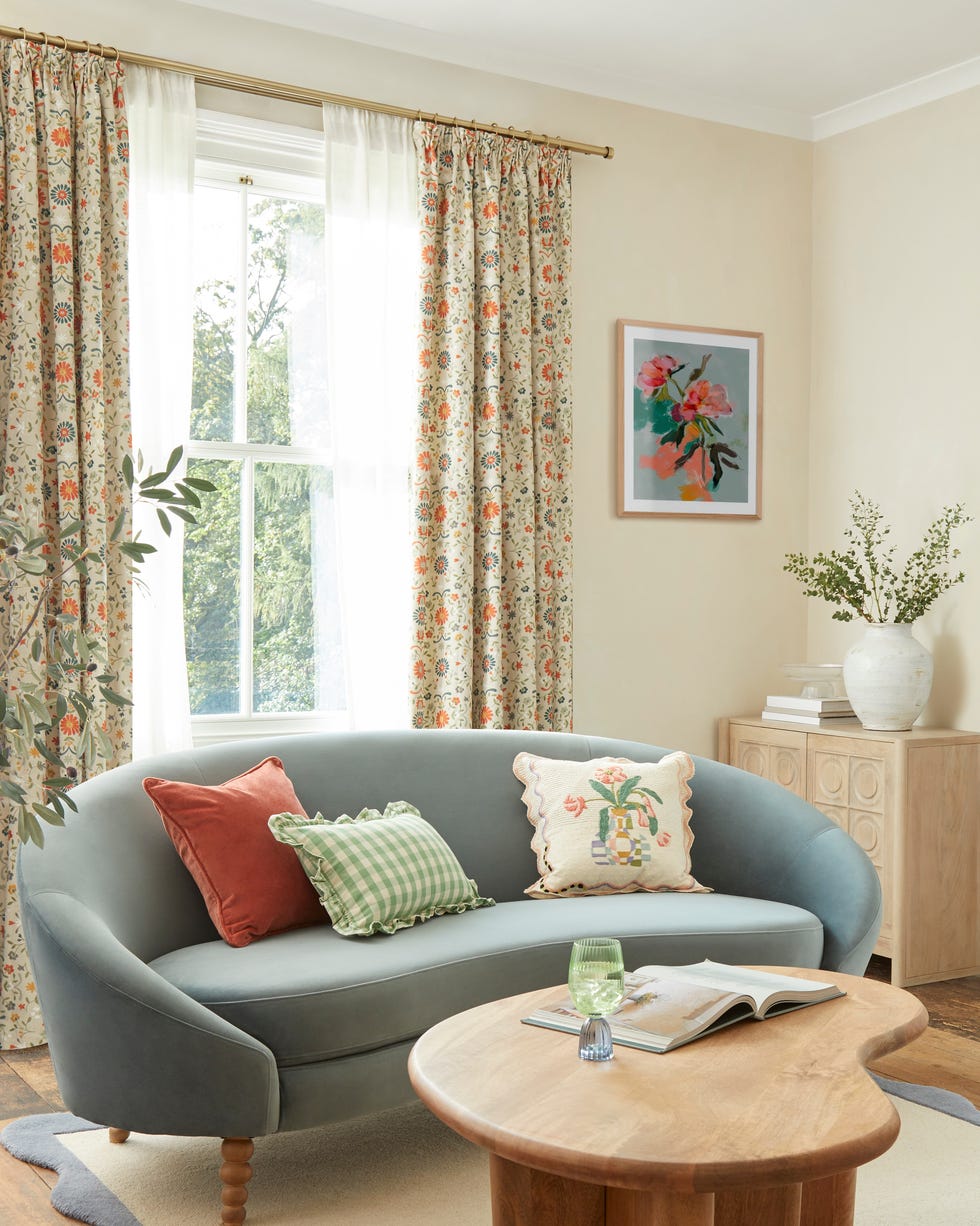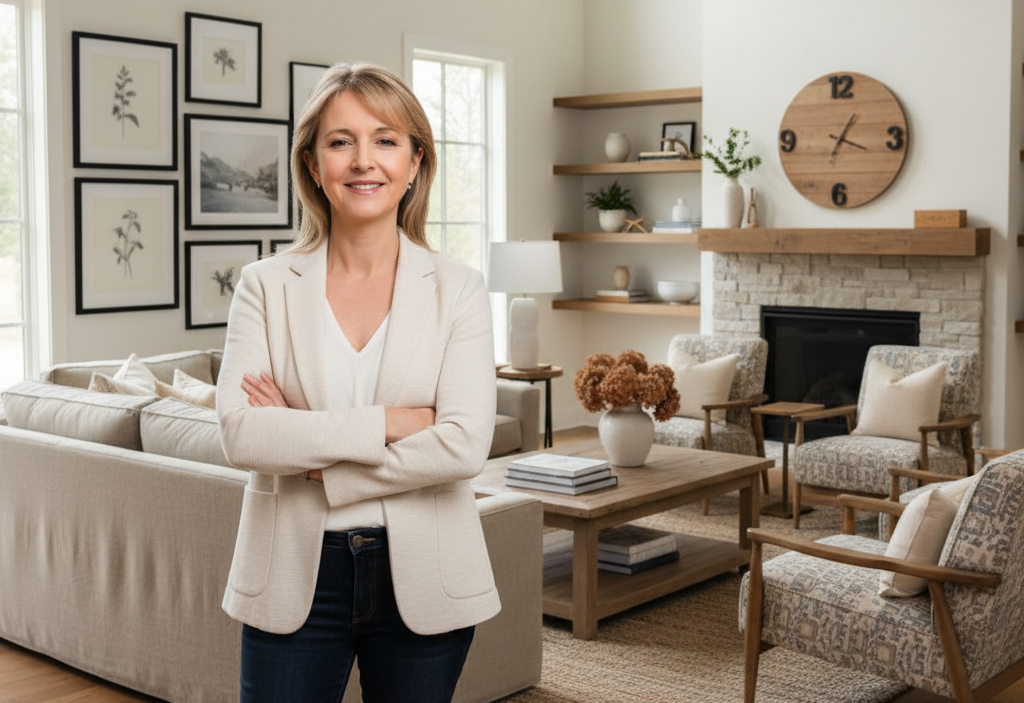Table of Contents
Create an illusion of spaciousness in your living room effortlessly with these expert design strategies. By implementing these techniques, you can ensure your space feels more expansive without compromising on its character or comfort. Explore our curated selection of tips and tricks tailored specifically to make your living room look bigger, offering a sense of openness and airiness that enhances your overall living experience.
Tip 1: Use White to Bounce Light Around
There’s a reason why white is a popular color choice in small living rooms. It creates the illusion of space, especially if your living room benefits from abundant natural light that can bounce off the walls.
‘Choose crisp or brilliant white tones for small spaces to create a clean and calming ambiance,’ says Zara O’Hare, interior design expert at Land of Rugs.

‘To avoid making the room appear stale, incorporate warm or bright colors in furnishings, accessories, or lush plants for a pop of color. White stands out when paired with darker wooden flooring or a stunning rug.‘
The finish of your paint is important, too. ‘Eggshell or satin finishes typically reflect light, creating the illusion of more space,‘ adds Zara.
Mirrors and other light-reflecting surfaces will also help to make your living room feel brighter.
Tip 2: Use Ambient Lighting
To expand a space visually, it all comes down to lighting. When done correctly, low lighting can feel cozy, but it can have the opposite effect on a room that’s simply too dark.

‘Relying on a single source of lighting can create dark corners that make the room feel cold and unappealing‘ says Victoria Foster, interior stylist at ScS, ‘Or, if you have particularly bright overhead lighting it can be too bright which makes it difficult to relax.
‘The living room is the most important room for getting your lighting right as you’ll tend to use it for winding down at the end of the day. Layering your lighting by adding floor lamps or table lamps can add dimension to the room. Choose warm-toned bulbs to create a cozy atmosphere.’
Tip 3: Have a Clear Out
Clutter, aka ‘visual noise‘, is making your living room feel cramped and therefore, smaller. Taking a ‘less is more‘ approach is a good move if you’re trying to physically make more room in your home, but this isn’t to say you can’t keep hold of the things you love.
It’s most important to think about value (specifically, personal value) and functionality, when deciding what deserves space in your living room.

‘Having a good clear out of any clutter that might be taking up space in your home is a great way to make your rooms feel cleaner and more peaceful overall,’ says Colette Toman, interior stylist at Make My Blinds. ‘Discarding anything that isn’t serving a purpose in your life, and having less stuff around your home generally, reduces your stress levels and helps you feel less overwhelmed.
‘Instead, invest in a few high-quality, timeless pieces that hold both aesthetic and functional value. This ensures that every item contributes meaningfully to your space, creating a curated and refined environment. By prioritizing quality, you not only reduce visual noise but also bring a sense of craftsmanship and longevity to your home decor, emphasizing enduring style over fleeting trends.’
For further organization, furniture that stores clutter out of sight will always be a good investment. Think ottoman benches and coffee tables with concealed drawers.
Tip 4: Use Black to Create Depth
It may seem counterintuitive to use black in your interior if you’re trying to make it look bigger, but, don’t dismiss it entirely.
‘Dark hues have the power to create contrast and depth, making your walls recede and your ceiling appear higher,’ says Zara. ‘Using dark colors on an accent wall, ceiling, or floor can achieve this striking effect.’
So, by using black carefully and sparingly, you can create the illusion of vertical space. And, if you contrast it with your wall color, you can make your living room feel much more expansive.
Tip 5: Choose the Right Flooring
Did you know that your flooring choice can directly impact the way you perceive the depth and size of your space? This isn’t just in terms of lighter colors and finishes, but how texture and pattern create optical illusions.
‘It’s not just the color of the walls that makes a difference, the flooring choice is equally as important,’ says Natalie Mudd, creative director at The Wood Flooring Co.
‘Choosing a lighter-toned wooden floor gives the illusion of more footprint. The direction of the flooring makes an immense impact on the flow and spatial feel of a room. I recommend placing the planks parallel to the widest wall. This will create an elongated look by drawing attention to the longest portion of the space.’
Tip 6: Make Smart Furniture Choices
Your sofa is often the most visually dominant piece of furniture in your living room, so it’s important to choose wisely, working with the space, rather than against it. Be honest with yourself in terms of what can fit comfortably – not only physically, but in terms of visual presence.
Choose a sofa with space between the base and the floor, which allows light to pass underneath.

You can also great creative with the type of sofa you choose – modular designs can be adjusted to fit the needs of your space, as well as already awkward layouts.
Jemma Jaques, visual design lead at The Lounge Co., advises: ‘If you’re dreaming of a corner sofa but are worried that it will be too big for your lounge, then it’s worth considering a modular.
As the name suggests, ‘Modular or sectional sofas come in separate units. You can create a bespoke sofa that’s perfect for you by adding, removing, or rearranging the modules. You could make the most of a small, unused corner by creating a small corner sofa from a corner unit and two arm ends.’
Alternatively, you can still get the feel of a corner sofa without the dominating size of one. Enter the chaise sofa. ‘It’s essentially a three or four-seater sofa with an extended seat at one end, creating an L-shape seating arrangement. They take up less room than a corner sofa and are perfect for providing lots of seats when needed,‘ explains Jemma.
Tip 7: Don’t Neglect Your Windows
Curtains are often forgotten about in the hierarchy of making a room feel bigger. But when chosen correctly and styled well, they can be the make or break factor in giving your living room an airy quality.
Long, floor-skimming curtains that are hung distinctly above your window, draw the eye upward, making the ceiling feel higher, and in doing so, making your living room look bigger.

Dark, heavy drapes can feel imposing, so opt for lighter shades and curtains made from more breezy materials – linen, cotton, or similar. It can also be worth using a voile panel behind your curtains, which gives you privacy during the daytime while still letting in an abundance of natural light. This is also handy if your view is somewhat chaotic, as the voile panel masks the outdoor world and gives your living room a calmer feel.


0 comments
[…] that go with orange – 7 perfect… You’ve heard of the Unexpected Red theory but… 7 ways to make your living room look… Cottage Interior Style Unveiled: 7 Expert Steps to… 7 Creative Ways to Enhance Your Space […]
[…] Top Posts Have you heard of the ‘Red Thread Theory’?… 14 Moroccan Decor Ideas for Every Room in… Colors That Don’t Go With Gray — ‘These… 8 Boho Small Living Room Ideas for the… The 8 Interior Design Tricks That Will Improve… What is a vignette? Interior designers explain this… Decorating with Green: 8 Designer Dark Paints for… Colors that go with orange – 7 perfect… You’ve heard of the Unexpected Red theory but… 7 ways to make your living room look… […]
[…] This brown living room plays around with variations of that color, throwing in a bright blue artwork for good measure. […]
[…] a light restoration and new fabric, I created this moment, this magical vignette in my living room that highlights and frames this extraordinary chair and its history with cherished art, […]